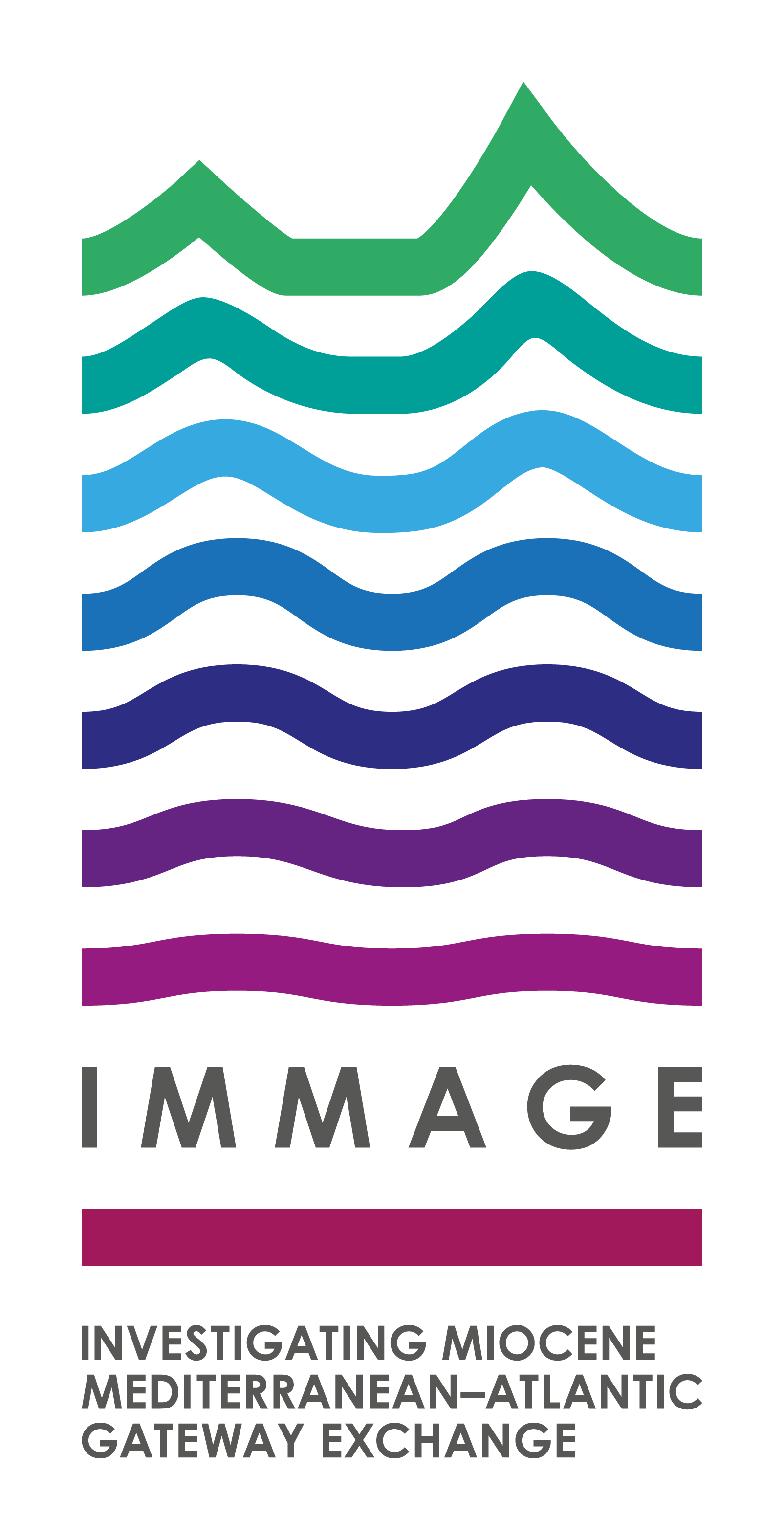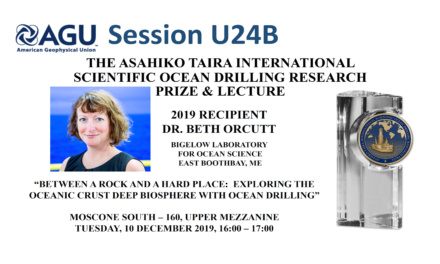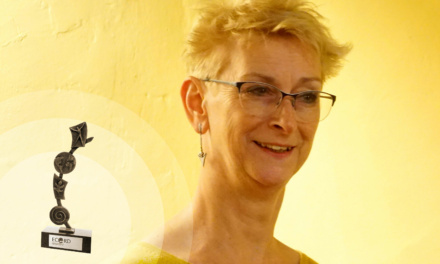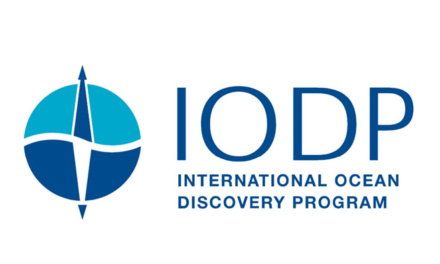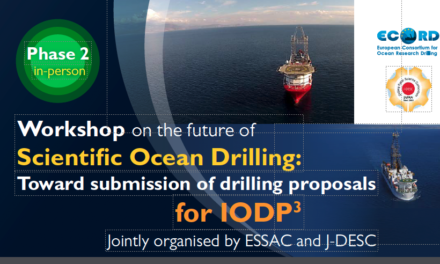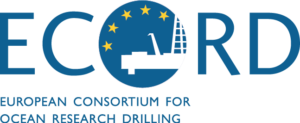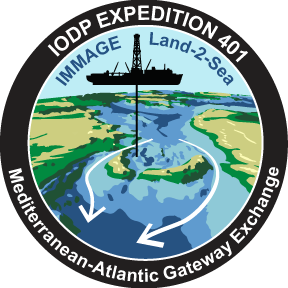
IODP Expedition 401 Mediterranean Atlantic Gateway Exchange
10 December 2023 – 9 February 2024
Next week Expedition 401 will depart from Amsterdam to begin its two-month scientific journey.
Today, the exchange of seawater between the Mediterranean Sea and Atlantic Ocean takes place exclusively through a single gateway: the Gibraltar Strait. Around 8 million years ago, however, there were another two gateways: one in northern Morocco and the other through southern Spain. Both these connections narrowed and then closed, restricting exchange and causing the Mediterranean sea level to fall by hundreds of meters. As a result, Mediterranean water became so salty that a layer of salt crystals more than 1000 meters thick, the “salt giant”, formed across its sea floor. A catastrophic deluge reconnected the Atlantic with the Mediterranean around 5 million years ago, terminating salt giant formation and transforming the Mediterranean into the marine system we see today. This extraordinary set of events impacted global climate both by changing the chemistry of the ocean and its circulation patterns. It may have contributed to a major episode of planetary cooling that led to permanent ice formation in the Arctic. The key to understanding and quantifying the climatic change caused by restricted Atlantic–Mediterranean water exchange and salt giant formation 5–8 million years ago lies in the chemical and physical properties of the sediments preserved in and on either side of the fossilized gateways. Expedition 401 seeks to uncover these climate secrets buried beneath hundreds of meters of water and rock.
This expedition forms part of the larger IMMAGE Project, the first land-to-sea drilling project [acquisition of data across the shoreline to investigate the interconnected global Earth system], representing a collaboration between the International Ocean Discovery Program (IODP) and the International Continental Scientific Drilling Program (ICDP). The objectives of this paleoclimate research project will be addressed by drilling at three offshore sites in the Atlantic and Mediterranean, and subsequently at two onshore sites that target the fossil corridors that have been tectonically uplifted and preserved on land, one in Morocco and one in Spain.
BACKGROUND:
The formation of a salt giant can impact climate through both physical and chemical processes in two main ways:
- The ocean plays a critical role in regulating our climate, redistributing heat from the equator to poles and absorbing atmospheric CO2. These circulation processes are partly controlled by the temperature and salinity differences across the ocean that drive ocean circulation. Seas like the Mediterranean that lose more fresh water by evaporation than they gain from rivers flowing into them, are an important source of dense, salty water. Today, Mediterranean water overflows a narrow, shallow sill in the Gibraltar Strait, forming a plume that follows seafloor contours around Spain and Portugal, flowing northwards to the Arctic. During salt giant formation, Mediterranean water was up to ten times saltier than it is In order to understand the climatic impact of this extreme high salinity overflow, Expedition 401 will use scientific drilling to recover plume sediments deposited before, during and after salt giant formation to quantify the changes to ocean circulation.
- Oceanic salts include calcium sulphate (gypsum) – used to make plaster – and the more familiar sodium chloride (table salt). Calcium is a key component of the global carbon cycle, so large- scale gypsum precipitation caused by salt giant formation can alter the calcium concentration of ocean water and perturb the climate. Five to six million years ago, 7-10% of all the salt in the ocean precipitated on the Mediterranean sea floor. When Mediterranean-Atlantic seawater exchange was reestablished, any dissolved evaporites were returned to the ocean. Expedition 401 will reconstruct the chemistry of Mediterranean overflow water before, during and after salt giant formation to reconstruct its impact on the ocean allowing us to model the consequences for the carbon cycle and global climate.
The expedition is led by Co-Chief Scientists Rachel Flecker (University of Bristol, UK) and Emmanuelle Ducassou (University of Bordeaux, France), and will core at three sites located in water depths ranging from 547 to 1,627 meters. Sediment cores from this expedition will cover the last ~8 million years of Earth’s climate history, including analogues for future warm climates with CO2 levels up to 500ppm.
“Expedition 401 is exciting in so many different ways. This is the first Land-2-Sea drilling project. It’s targeting a truly extraordinary period in Mediterranean history. It’s also exploring two new mechanisms for driving climate change.”
Rachel Flecker, IODP Exp. 401 Co-chief Scientist
“So many people worked on this project to make it real, it’s unbelievable! I am just so happy and excited to participate in such a crazy project!”
Emmanuelle Ducassou, IODP Exp. 401 Co-chief Scientist
SCIENTIFIC OBJECTIVES:
The overall objective of the International Ocean Discovery Program (IODP) Expedition 401 is to better understand the exchange between the Mediterranean and the Atlantic Ocean during the most dynamic period of its evolution as a gateway.
Some of the specific scientific objectives include the following:
- Identifying when the Atlantic first began to receive distinct outflow waters from the Mediterranean. Differences in the density of the two water masses result in generation of substantial current speeds and contourite drift formation on the continental slope.
- Understanding the formation of the Mediterranean salt giant, an extreme oceanographic event that had climatic consequences at local, regional and global scales.
- To test hypotheses concerning the physics of ocean overflow systems in order to better quantify general ocean circulation models.
SCIENTIFIC OPERATIONS:
The expedition is conducted by the JOIDES Resolution Science Operator (JRSO) as part of the IODP. The IODP is a multidecadal, international research program supported by 22 nations, with the goal of exploring Earth’s history and structure recorded in seafloor sediments and rocks and monitoring sub- seafloor environments. Expedition 401 will sail with 26 scientists from 11 countries, with expertise in a range of geoscience disciplines. While at sea, the JOIDES Resolution laboratory infrastructure will be utilized for intensive sampling and investigation of the cores retrieved. This includes splitting, describing, and analyzing the cores, which will be made available to non-expedition scientists after a one-year moratorium. Data from these core samples will be used by scientists all over the world.
Throughout the expedition, the JOIDES Resolution can provide personalized ship-to-shore live broadcasts to school, community, and museum groups, the media and the general public. Interested parties should contact thejoidesresolution@gmail.com for more information.

More information:
Official webpage of Expedition 401:
https://iodp.tamu.edu/scienceops/expeditions/mediterranean_atlantic_gateway_exchange.html
Download official Press Release:
| English |
About the research programme: https://www.iodp.org/
Contact / interviews / images
Erin Winick Anthony and Kellan Moss
Expedition 401 Onboard Outreach Officers
Email: thejoidesresolution@gmail.com
Carol Cotterill
Assistant Director, Education and Outreach
US Science Support Program
Email: ccotterill@ldeo.columbia.edu
Trevor Williams
Expedition 401 Project Manager
JOIDES Resolution Science Operator
Email: williams@iodp.tamu.edu OR jr_williams@ship.iodp.tamu.edu
Get involved:
Twitter – @TheJR
Instagram – @joides_resolution
Facebook – JOIDES Resolution
Threads – @joides_resolution
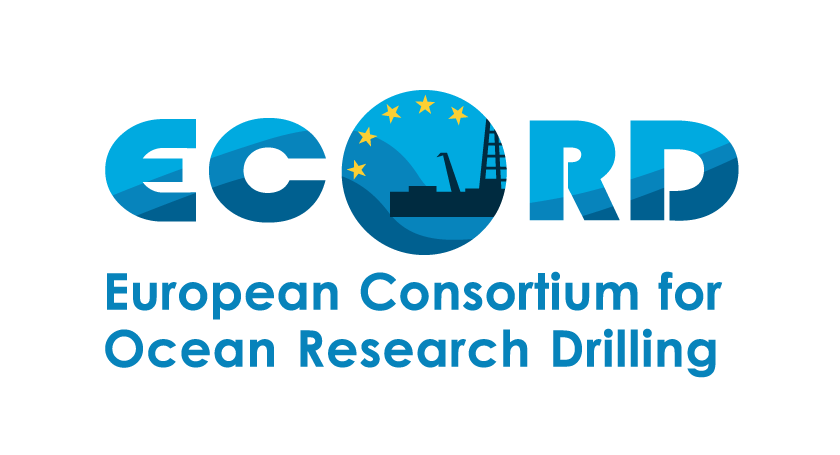
On the occasion of the Expedition 401, and at the same the start of the IMMAGE Project, ECORD and USSSP participated in the preparations for an exhibit in Algarve Living Science Center. ECORD arranged for the ECORD Sphere to be displayed during the exhibition.
ECORD funded the position of a Project Manager for IMMAGE at the University of Bristol.
